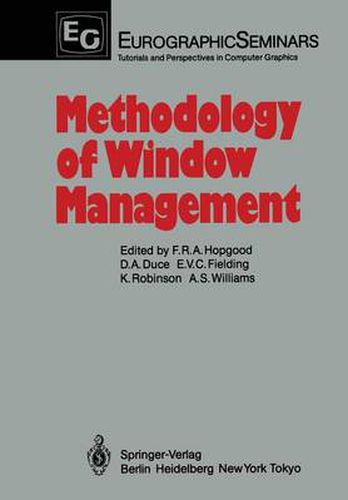Readings Newsletter
Become a Readings Member to make your shopping experience even easier.
Sign in or sign up for free!
You’re not far away from qualifying for FREE standard shipping within Australia
You’ve qualified for FREE standard shipping within Australia
The cart is loading…






This title is printed to order. This book may have been self-published. If so, we cannot guarantee the quality of the content. In the main most books will have gone through the editing process however some may not. We therefore suggest that you be aware of this before ordering this book. If in doubt check either the author or publisher’s details as we are unable to accept any returns unless they are faulty. Please contact us if you have any questions.
This volume is a record of the Workshop on Window Management held at the Ruth erford Appleton Laboratory’s Cosener’s House between 29 April and 1 May 1985. The main impetus for the Workshop came from the Alvey Programme’s Man Machine Interface Director who was concerned at the lack of a formal definition of window management and the lack of focus for research activities in this area. Win dow Management per se is not the complete problem in understanding interaction. However, the appearance of bitmap displays from a variety of vendors enabling an operator to work simultaneously with a number of applications on a single display has focussed attention on what the overall architecture for such a system should be and also on what the interfaces to both the application and operator should be. The format of the Workshop was to spend the first day with presentations from a number of invited speakers. The aim was to get the participants aware of the current state of the art and to highlight the main outstanding issues. The second day consisted of the Workshop participants splitting into three groups and discussing specific issues in depth. Plenary sessions helped to keep the individual groups work ing on similar lines. The third day concentrated on the individual groups presenting their results and interacting with the other groups to identify main areas of con sensus and also a framework for future work.
$9.00 standard shipping within Australia
FREE standard shipping within Australia for orders over $100.00
Express & International shipping calculated at checkout
This title is printed to order. This book may have been self-published. If so, we cannot guarantee the quality of the content. In the main most books will have gone through the editing process however some may not. We therefore suggest that you be aware of this before ordering this book. If in doubt check either the author or publisher’s details as we are unable to accept any returns unless they are faulty. Please contact us if you have any questions.
This volume is a record of the Workshop on Window Management held at the Ruth erford Appleton Laboratory’s Cosener’s House between 29 April and 1 May 1985. The main impetus for the Workshop came from the Alvey Programme’s Man Machine Interface Director who was concerned at the lack of a formal definition of window management and the lack of focus for research activities in this area. Win dow Management per se is not the complete problem in understanding interaction. However, the appearance of bitmap displays from a variety of vendors enabling an operator to work simultaneously with a number of applications on a single display has focussed attention on what the overall architecture for such a system should be and also on what the interfaces to both the application and operator should be. The format of the Workshop was to spend the first day with presentations from a number of invited speakers. The aim was to get the participants aware of the current state of the art and to highlight the main outstanding issues. The second day consisted of the Workshop participants splitting into three groups and discussing specific issues in depth. Plenary sessions helped to keep the individual groups work ing on similar lines. The third day concentrated on the individual groups presenting their results and interacting with the other groups to identify main areas of con sensus and also a framework for future work.